
Where are our ships, trucks, airplanes, etc, built?
They are constructed in these large-scale production factories, like many other contemporary products. By identifying a marketable product and acquiring or building a plant to concentrate on specialized mass manufacturing, businesses can corner whole markets.
There is nothing typical about the factories that produce the world’s cruise ships and electric vehicles. A few of them have the size, population, and services of a real city, but the majority of them occupy multiple city blocks.
Have you ever considered the size of the factories used to make your goods?
In this post, we have created a top 10 list of the largest factories in the world based on both volume and area. Let’s find out what they are. We’ll go over the list in order of largest to smallest. Some of them, which aren’t even the largest on the list, are three times as huge as Central Park in New York City or have a capacity for 13 Wembley Stadiums.
So, without waiting, let’s jump right into it.
Largest Factories in the World (By Volume)
Boeing Everett Factory, USA: 13.3 million m3 (472 million ft³)
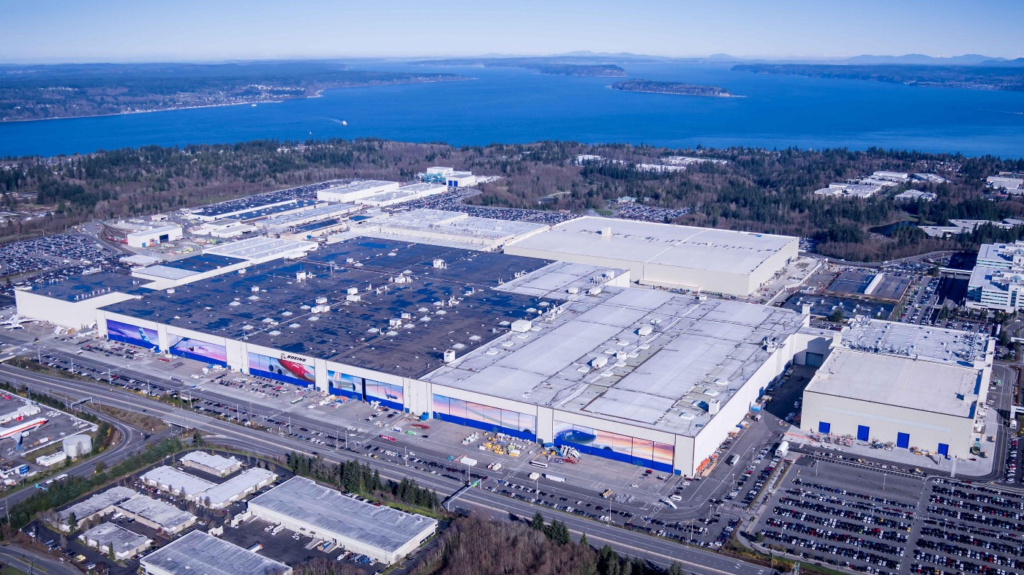
The biggest manufacturing facility in the world is the Boeing Everett facility in Washington, USA. The facility is used to construct the Boeing 747, 767, 777, and the brand-new 787 Dreamliner aircraft, with a total volume of 13,385,378 m³ (472,370,319 ft³) and a floor area of 399,480 m² (4.3 million ft²).
The factory, which was initially built in 1967, has twice undergone expansions to accommodate the production of the newest line of airplanes, giving it the enormous size it has today.
Gigafactory Texas, Texas, USA: 9.57 million m3 (338 million ft³)
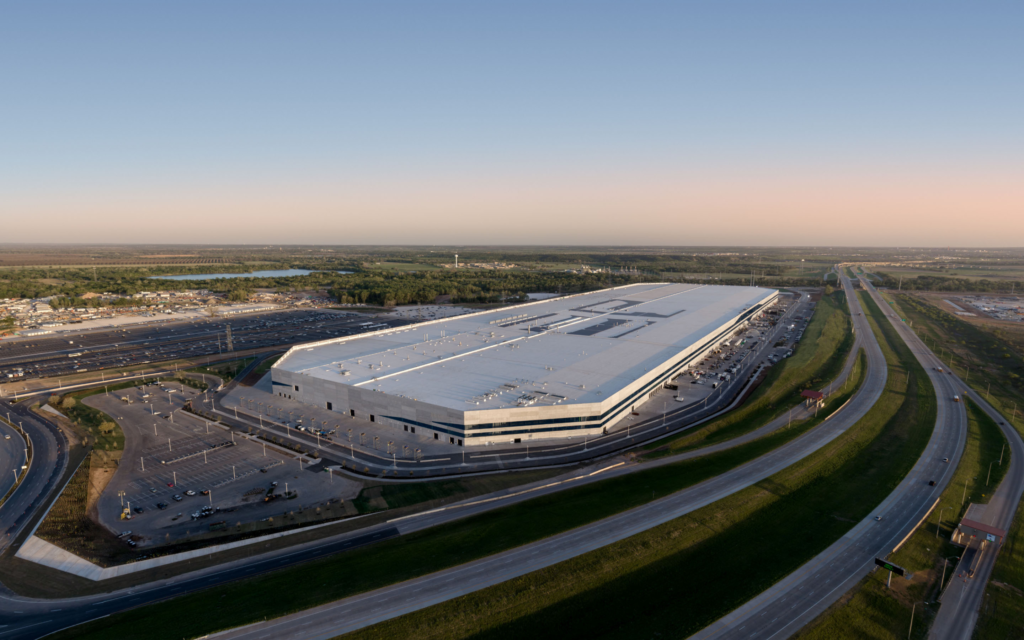
Tesla, Inc. created Gigafactory Texas, sometimes referred to as Giga Texas or Gigafactory 5, a car manufacturing plant close to Austin, Texas. Construction started in July 2020, restricted Model Y manufacturing started before the end of 2021, and the first vehicles made at the facility were delivered at an inaugural celebration called “Cyber Rodeo” on April 7, 2022. It has a total volume of 9.57 million m3 (338 million ft³).
The factory makes Model Y automobiles for the Eastern United States and will serve as the primary production facility for the Tesla Cybertruck and Tesla Semi. Additionally, it houses Tesla’s corporate offices. After the Boeing Everett Factory, it is the second-largest factory in the nation in terms of size as well as the second-largest structure globally in terms of volume.
Jean-Luc Lagardère Plant, France: 5.6 million m3 (199 million ft³)

The plant is in charge of the $428 million, 800-seat Airbus A380 aircraft’s final assembly. The previous Airbus A380 aircraft’s components were made in countries like Spain, England, and Germany before being shipped here for assembly. The factory of Jean-Luc Lagardère, which is in Toulouse-Blagnac, has a floor area of 122,500 m² (1,319,000 ft²) and a volume of 5.6 million m3 (199 million ft³).
Aerium, Germany: 5.2 million m3 (184 million ft³)

The Germans constructed the Aerium, a massive factory that served as an airship hangar at the close of World War II because large ships require large accommodations. German forces held it until 1945 when the communist army seized control. The runway was significantly extended by the Soviets in an effort to make everything bigger and better.
They increased the stakes by lengthening it to 500 m. The Aerium was the ideal location for fighter jets at the time, but in 1994, following the unification of east Germany, the Soviet army gave the German government back the base as a gesture of goodwill. To further complicate matters, a private company freight lifter purchased Aerium only to declare bankruptcy six years later.
In fact, a Malaysian firm now owns the Aerium, and it has been transformed into a tropical theme park, which makes sense given that the dome-shaped structure likely produces a lot of heat and humidity during the warmer months.
It has a volume of 5.2 million m3 (184 million ft³).
Meyer Werft Dockhalle 2, Germany: 4.72 million m3 (167 million ft³)
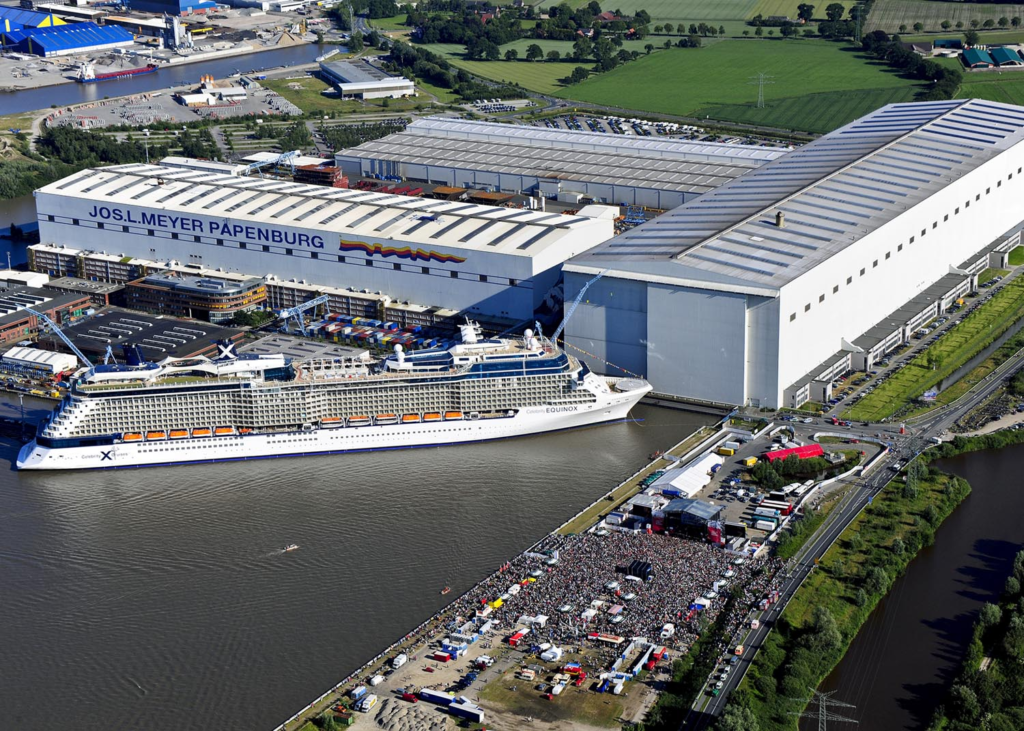
The largest shipping construction hall in the world, with a fantastic floor area of 63,000 m² (680,000 ft²) and volume of 4.72 million m3 (167 million ft³), is located in this historic city that dates back to 1795. Given that the entire complex is used to build and house cruise ships, it seems to reason that they would require a massive residence while not in use.
When you move up to the roof to the dry dock, this place is simply wild. It’s a massive building with a length of 504 m (1,653 ft), a width of 125 m (410 ft), and a height of 75 m (246 ft), so don’t even try to use a tape measure. The renowned Norwegian Star, the Norwegian Dawn, Radiance of the Seas, and the Norwegian Jewel are just a few of the ships that have been assembled in Dockhalle 2.
Boeing Composite Wing Center, USA: 3.7 million m3 (131 million ft³)
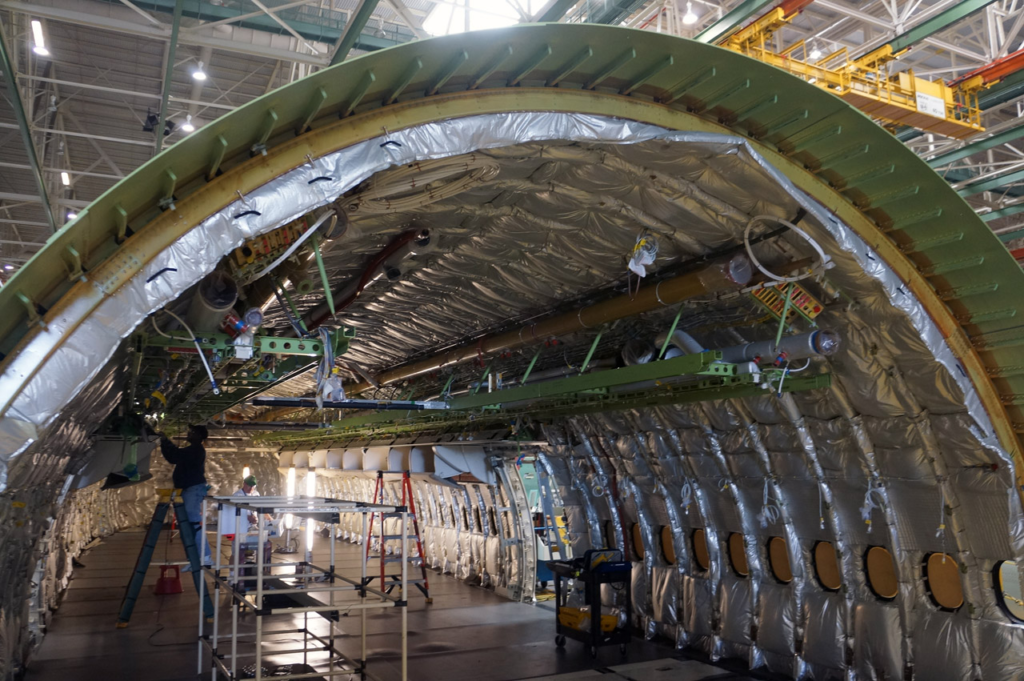
Boeing’s Composite Wing Center in the Evergreen State will produce the largest composite wings for the 777X jetliner. The building, which is larger than 21 football fields, took more than four million hours to construct and used more than 31,000 tonnes of steel. The Center has a volume of about 3.7 million m3 (131 million ft³).
In fact, the structure is so large that it can accommodate three of the largest cylindrical autoclaves in the world, each of which can hold two Boeing 737 fuselages. The building includes the offices of the staff who manage the enormous production process in addition to the enormous space needed to store airplane parts.
NASA Vehicle Assembly Building, USA: 3.66 million m3 (130 million ft³)
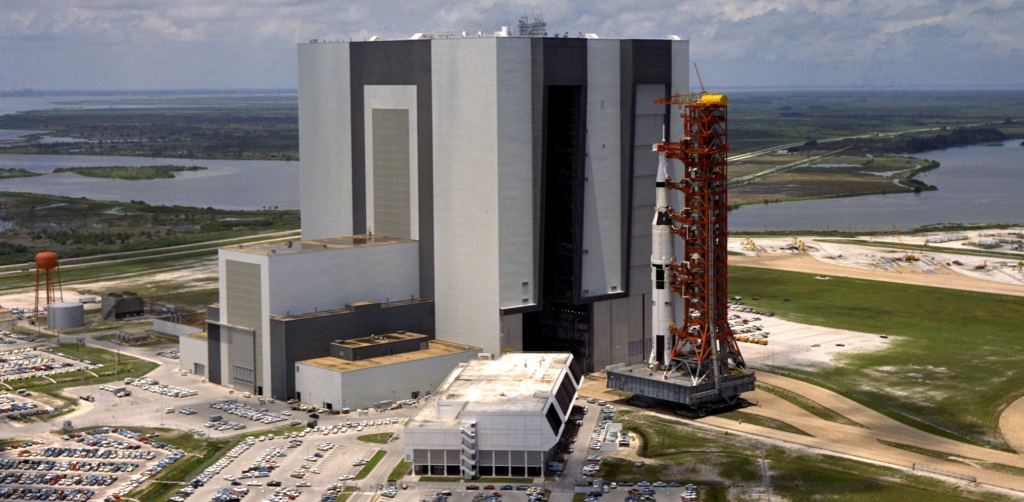
The gigantic Saturn V and Space Shuttle, as well as other big pre-fabricated space vehicle components, can be assembled in the VAB at NASA’s Kennedy Space Center (KSC) and stacked vertically onto one of the agency’s three mobile launcher platforms.
The structure is located at Launch Complex 39 at KSC, which is on Merritt Island on Florida’s Atlantic coast, 219 mi (352 km) north of Miami, 149 mi (240 km) south of Jacksonville, and 50 mi (80 km) due east of Orlando.
The VAB was the tallest single-story structure in the world, the tallest structure in Florida (526 ft or 160 m) until 1974, and the tallest structure in the United States that is not located in a metropolitan area. The Center has a volume of about 3.66 million m3 (130 million ft³).
Tesco Donabate Distribution Centre, Ireland: 1.55 million m3 (54.83 million ft³)

The biggest structure in Ireland is this distribution center. This distribution center for electrical and dry goods was built in 2007, having an area of 80,194 m² (863,200 ft²) and a volume of 1.55 million m3 (54.83 million ft³). The structure is enormous; it is about half a mile long and will take the average individual 12 minutes to walk from end to end. The Tesco complex, which cost 70 million euros to build, has 100 loading bays as well.
Austal , USA : 1.365 million m3 (48.204 million ft³)

Although the corporation also has locations in Vietnam and the Philippines, Austal USA is the American division of an Australian shipbuilding company. This Alabama complex, which occupies a massive 68,250 m2 (734,600 ft²) of land, is the company’s largest facility. The place has a volume of about 1.365 million m3 (48.204 million ft³).
Despite being owned by Australians, Austal USA constructs commercial ships such as ferries and cruise liners. The facility is also given special clearance to work alone on delicate projects like war vessels for the US navy.
Constellation Bristol, England: 1.05 million m3 ( 3.7 million ft³)

The factory and warehouse, which is owned by Constellation Europe, took three years to construct and represent 15% of the UK’s overall wine and alcoholic beverage industry. The building’s volume, which measures 1.05 million m3 ( 3.7 million ft³) and has a roof large enough to accommodate 4,000 automobiles, is equal to that of 14,000 double-decker buses. 57 million wine bottles can be stored in the building. The £100 million initiative includes forklift trucks that are directed by lasers and nine km of fiber optic wire.
To cut expenses, branded wines like Hardys and Banrock Station are bottled locally after being imported into the country in enormous 25,000-liter vats. Unbelievably, 800 wine bottles are bottled every minute. To make sure they contain the correct amount, they are photographed 18 times after bottling.
Largest Factories in the World (By Area)
Volkswagen Wolfsburg Plant, Germany: 6.5 million m² (70 million ft²)
One of the biggest cities in Germany is Wolfsburg, which is 62 mi (100 km) from Hannover and 136 mi (220 km) from Berlin on the A2 highway. The city is well-known for housing the headquarters of Volkswagen, which operates 123 production plants worldwide and sells cars in 153 countries. Of these, the Wolfsburg factory, with an area of 6.5 million m² (70 million ft²), is acknowledged as the largest manufacturing facility in the world.
Production lines in the factory are 1.55 mi (2.5 km) long and 300 m (984 ft) broad, and there are 65,000 people working there. The prototype needs roughly 14 days to reach testing, and during that time, multiple enormous cranes and presses with capacities ranging from 50 tonnes to 7,800 tonnes—all allegedly the biggest in the world—press metal sheets. With 5,000 robots working continually in the production lines, the plant is 98% automated.
Ulsan Factory, South Korea: 5 million m² (53 million ft²)
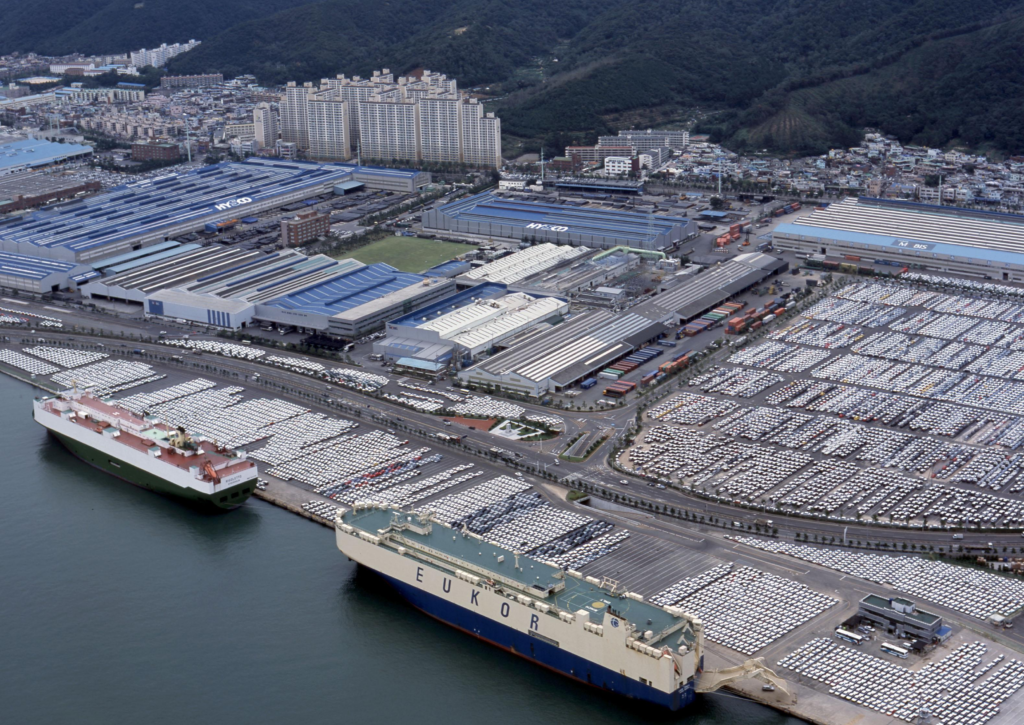
The five-building, 5 million m² (53 million ft²) Ulsan Factory in South Korea produces 14 different Hyundai model variants, as well as engines and transmissions, at a rate of one vehicle every 12 seconds. It first opened in 1968 and has subsequently expanded, and now it employs 34,000 people, some of whom live in a dorm on site. There is a cargo ship pier and sewage treatment plant onsite.
Kia Hwaseong Plant, South Korea: 3.3 million m² (35 million ft²)

The Kia Hwaseong Plant, with a capacity of 563,000 automobiles annually, is the biggest single industrial complex and is situated in Hwaseong, Gyeonggi, South Korea. It is one of Kia’s largest car manufacturing sites, with a total area of 3,306,000m² (35 million ft²). The facility keeps a testing area with a high-speed oval, 12 separate test tracks that total 8.7 mi (14 km) in length, and 32 various types of roads.
Tesla Gigafactory, USA: 490,000 m² (5.3 million ft²)

A lithium-ion battery and electric vehicle component manufacturing facility is located in Storey County, Nevada, in the United States. Tesla, Inc. owns and operates the facility, which is located east of Reno and provides battery packs for the company’s electric vehicles. The facility has an area of 490,000 m² (5.3 million ft²). The structure will have the biggest footprint in the world if it is fully constructed.
At the end of 2018, the facility, which is housed at the Tahoe Reno Industrial Center (TRIC), employed about 7,000 people. The state’s goal is to hire thousands more people, bringing the total to close to 10,000. Nevada might possibly get manufacturing projects in the future.
Using battery cells made elsewhere, the factory began small-scale production of the Tesla Powerwall home energy storage system in the first quarter of 2016, and mass production of the cells started in January 2017. Brian Sandoval, the governor of Nevada, predicted that the building and operation of the factory would bring $100 billion in economic benefits to Nevada over a 20-year period. On July 29, 2016, the grand opening celebration took place.
Tesla Fremont Factory, USA: 490,000 m² ( 5.3 million ft²)
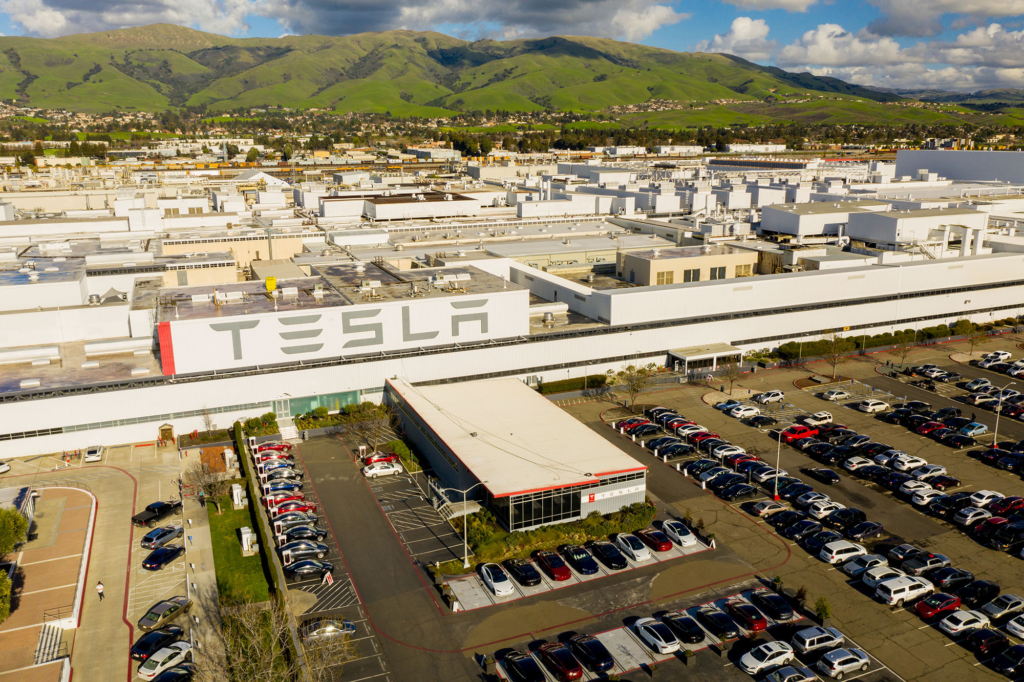
The Tesla Fremont Factory is a car-making facility run by Tesla, Inc. in Fremont, California. General Motors Co. initially constructed the facility in the 1960s, and GM and Toyota jointly ran it until GM declared bankruptcy in 2009. Since then, new additions have been haphazardly added to create an anthill of manufacturing.
Bustling assembly lines that couldn’t fit inside the cramped factory find shelter in a pair of industrial tent buildings that were once used as a rear parking lot. Tesla acquired control in 2010. At the plant, the Model S, Model X, Model 3, and Model Y are currently produced. The facility has an area of 490,000 m² (5.3 million ft²).
Austal USA, USA: 467,000 m² (5 million ft²)
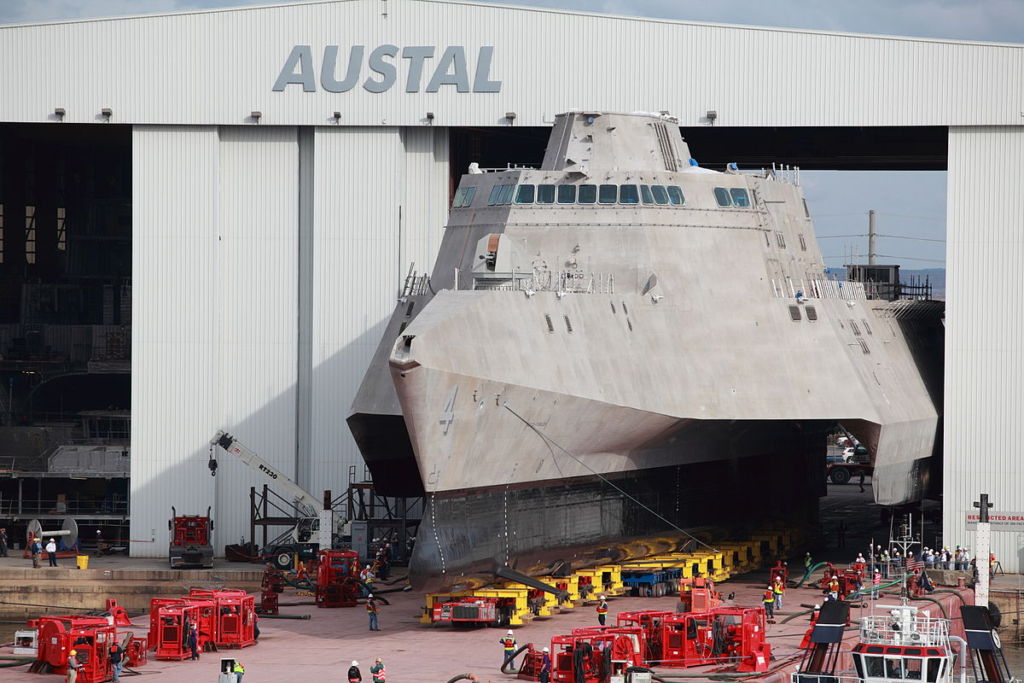
The American division of an Australian shipbuilding enterprise is called Austal USA. Although the company also has locations in Vietnam and the Philippines, this Alabama factory, which takes up a whopping 467,000 m² (5 million ft²) of land, is the biggest facility the company owns.
Commercial ships, including ferries and cruise liners, are built by Austal USA. Despite being owned by Australians, the facility is also given special permission to work alone on delicate projects like battle vessels for the US navy.
Boeing Everett Factory, USA: 398,000 m² (4.2 million ft²)
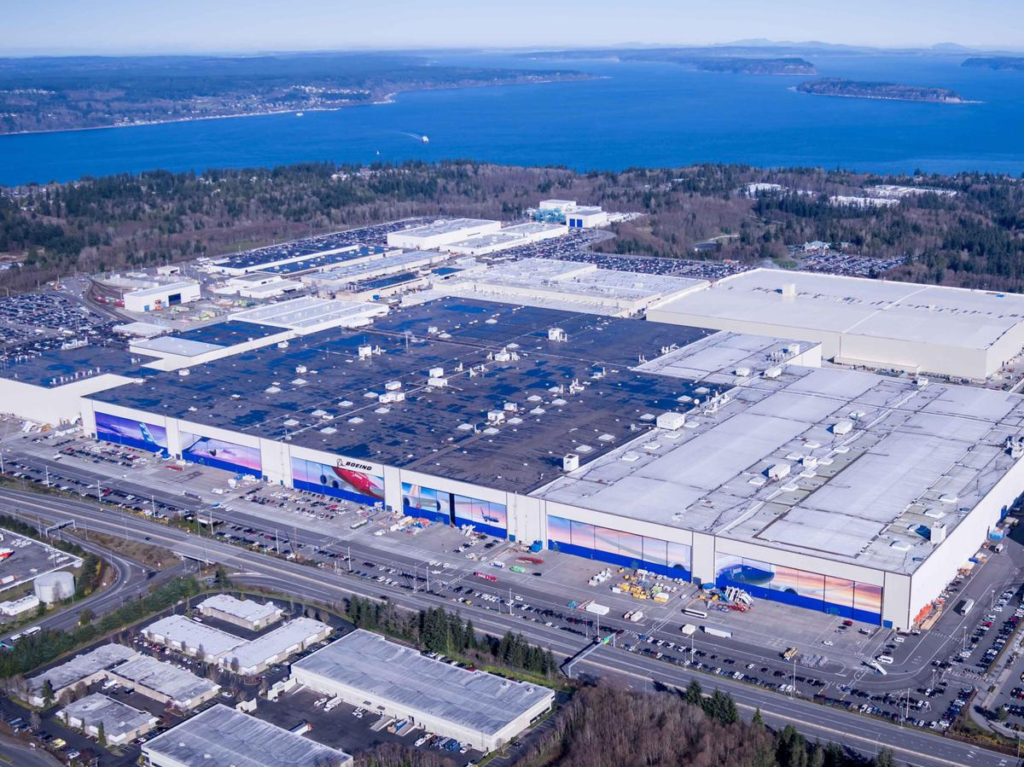
In Everett, Washington, the United States, Boeing constructed an airplane assembly plant known as the Boeing Everett Factory. It occupies 398,000 m² (4.2 million ft²) and is located at the northeastern corner of Paine Field. It contains the largest building in the world in terms of volume, 13.3 million m3 (472 million ft³).
State Route 526, also known as the Boeing Freeway, runs alongside both sides of the entire complex. The factory, which was initially constructed in 1967 for the Boeing 747, has since undergone a number of expansions to make room for new airliners, such as the 767, 777, and 787 programs.
Belvidere Assembly Plant, USA: 330,000 m² (3.5 million ft²)
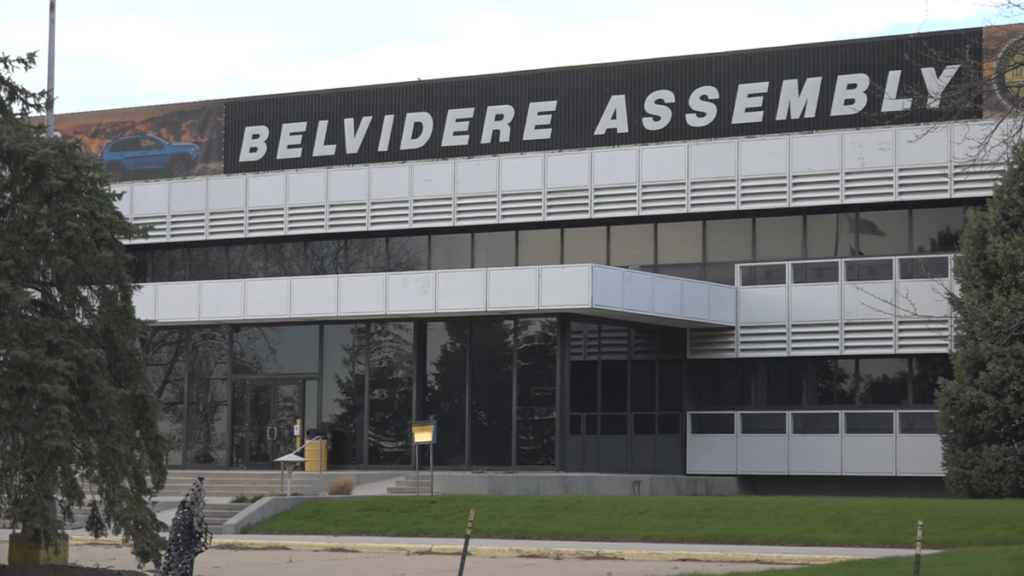
With 2.3 million ft² of space, Mitsubishi Motors North America once operated the second-largest manufacturing facility in Illinois and one of the largest in the world. However, it stopped production in 2015, closing the Normal, Illinois, facility and shifting all of the state’s automobile production to Chrysler’s Belvidere Assembly Plant. This 330,000 m² (3.5 million ft²) facility, built in 1965, uses 780 robots to assemble the Jeep Compass, Jeep Patriot, and Dodge Dart on more than 280 acres of land.
Jean-Luc Lagardère Plant, France: 122,500 m² (1.3 million ft²)
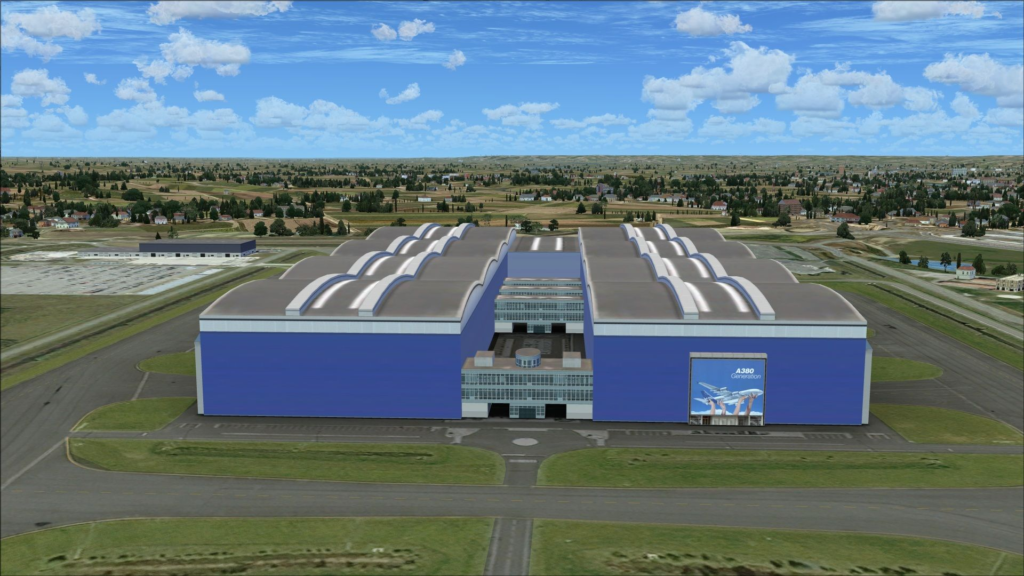
The Airbus A380 is put together at the Jean-Luc Legardére Plant in Toulouse-Blagnac, which is located in the French region of Blagnac. The facility in France is responsible for the final build’s assembly and testing. The complex is 122,500 m² (1.3 million ft²) and has a runway that spans 1.98 km² outside the plant. The plane’s components are manufactured in several countries around Europe.
Lauma Fabrics, Latvia: 111,500 m² (1.2 million ft²)

Because Lauma Fabrics manufactures lace, ribbons, and fabric for lingerie at its facility in Latvia, which is 1.2 million ft² in size, it is possible that this plant offers the largest size manufacturing plant available in relation to the size of the product being produced within it. The factory floor is 224 m (738 ft) long, but the building’s breadth is 487 m (1,600 ft), so it’s almost like having twice as much space. Construction on the structure began in 1965. The factory has an area of 111,500 m² (1.2 million ft²).

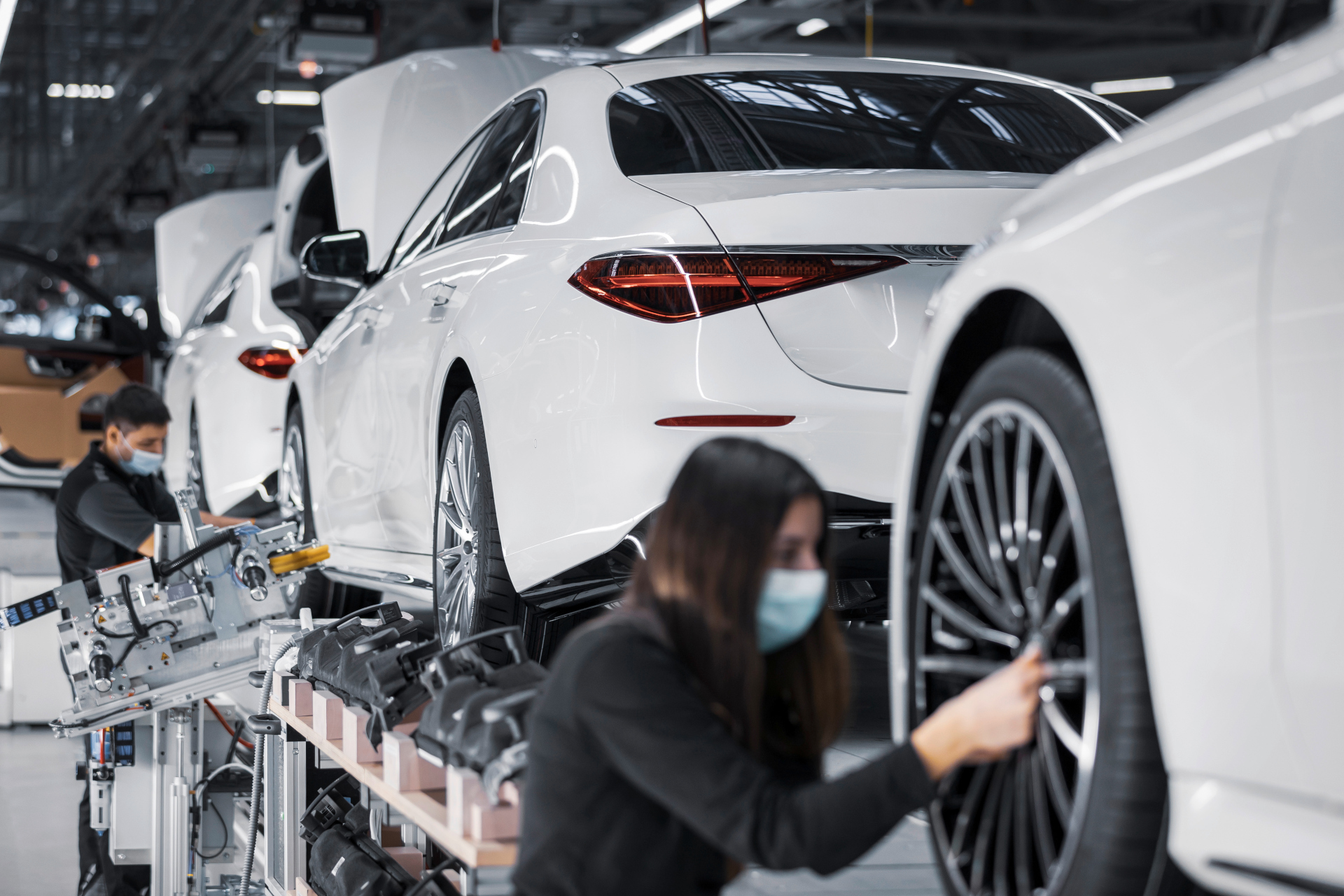
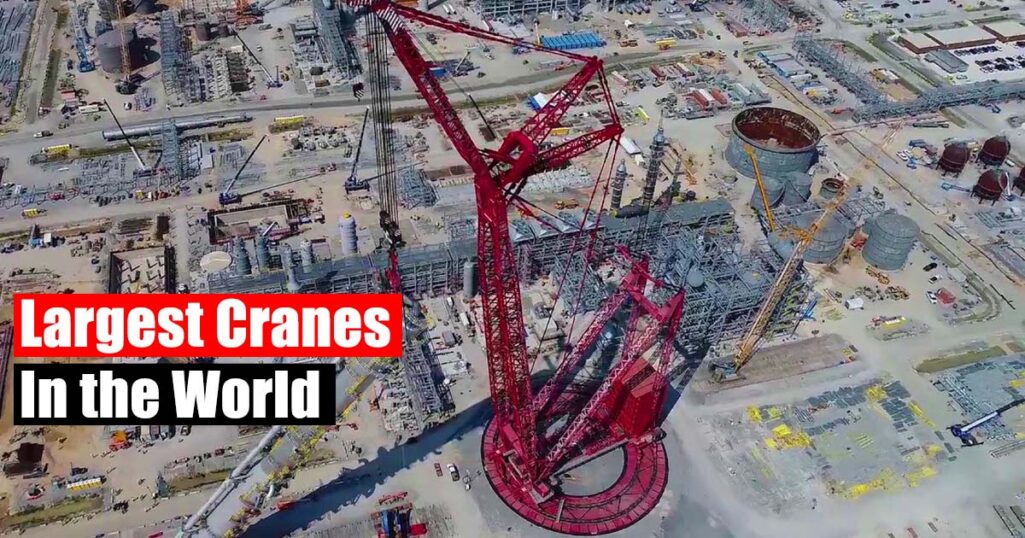
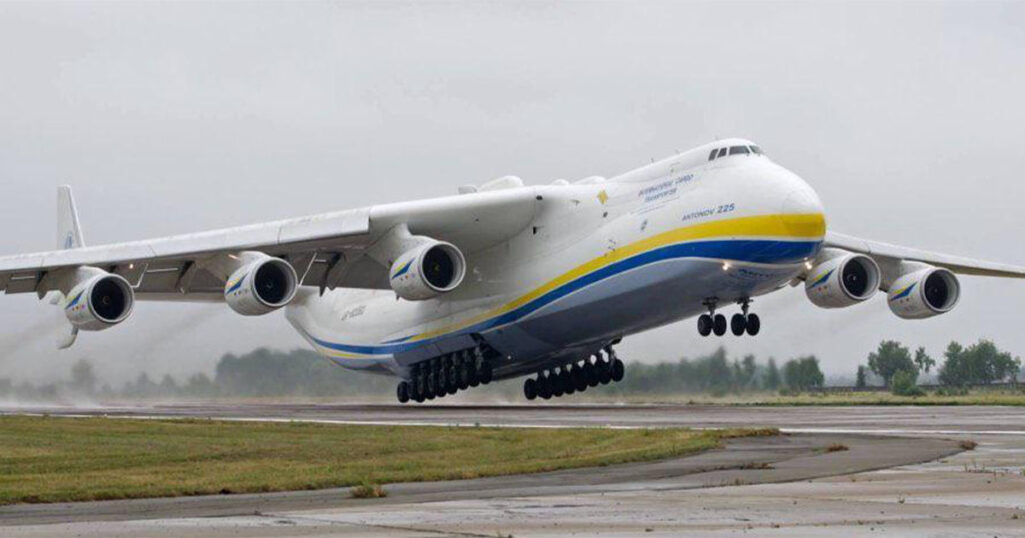

u news article sucks cock